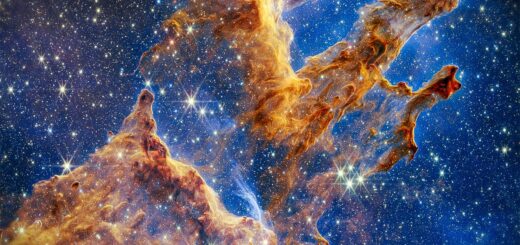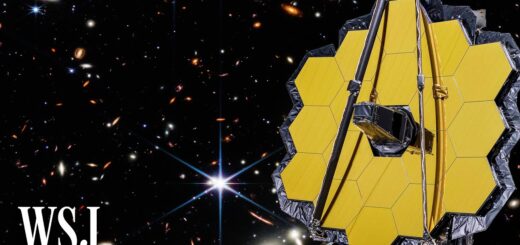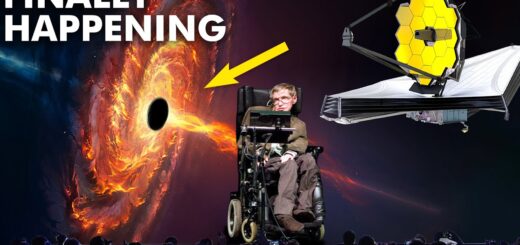Webb Just Saw The Farthest Star Ever And It’s Mind Blowing
The James Webb Space Telescope has marked the beginning of a new era in extragalactic astronomy. Within a few weeks of working, the infrared observatory has already discovered several candidate galaxies that challenge the big bang theory and our galactic evolution models. And now, Webb focused its instruments on the most distant isolated star known in the universe, Earendel. The light-travel distance to Earendel is 12.9 billion light years. This means that if the big bang is true, the star existed when the universe was just 900 million years old. Earendel might belong to a rare population of stars that astronomers have been hunting for over half a century. But how did scientists discover a lone star so far away in the universe? How is Earendel different from the stars we see around? Finally, and most importantly, how do the recent James Webb observations of Earendel challenge our theories of stellar evolution? The light travel distance to Earendel is 12.9 billion light years, but the present proper distance, which considers the universe’s expansion, is 28 billion light years. So we are actually looking at the star as how it appeared 12.9 billion years ago. This means that Earendel is about 8.2 billion years older than the Sun and the Earth. So far, the smallest objects observed at these distances were star clusters embedded in distant galaxies. But Earendel is the first isolated star found at such a large distance. This star was discovered by chance using the Hubble Space Telescope. Hubble first observed the star’s parent galaxy that was gravitationally lensed by a cluster in the foreground. Massive astronomical objects such as galaxy clusters distort the spacetime fabric around them. As a result of this distortion, the light from the foreground celestial bodies bends when it passes close to these massive objects. In certain cases of precise alignment, the foreground clusters can magnify the light from individual stars by factors of thousands. Because of this gravitational lensing, the background galaxy containing Earendel appeared like an arc that the astronomers named the Sunrise arc. But the team saw a bright object sitting on the edge of the distorted galaxy. Luminous sources in distant galaxies tend to be highly energetic events such as novas, supernovas, or tidal disruptions caused by black holes. These are transients that happen to change their brightness with time. However, Hubble’s observations showed that the brightness of this object remained constant for over three and a half years. Hence, astronomers concluded it’s a gravitationally lensed bright star in Sunrise Arc. Because of its wavelength limitations, Hubble could provide only limited information about this distant star. So astronomers used the James Webb Space Telescope to study Earendel’s properties further. This study was led by Dr. Brian Welsh from Johns Hopkins University. He discovered the star with his team in March 2022 using the Hubble Space Telescope data. In their paper, the researchers analyzed new images of Earendel obtained by Webb’s NIRCam instrument. These images span a wavelength range of 0.8 to 5 microns. Earendel was studied in eight different Webb filters, with each filter having an exposure time of over half an hour. There are three significant points to note in the new observations by the James Webb Space Telescope. The first is the star’s redshift. The redshift of deep space objects gives a measure of their distance. Redshift is denoted by a dimensionless quantity z. Z = 0 marks present time, and as its value increases, so does the lookback time and the distance to that object. New Webb observations confirm that Earendel lies at a redshift of 6.2. This number is consistent with the Hubble Space Telescope data released in early 2022, making Earendel the highest-redshift star ever. The next important thing to note about Earendel is its bolometric luminosity, or the energy emitted by the star over the entire electromagnetic spectrum. The Webb data rules out the possibility of Earendel being a low-mass star, a brown dwarf star, or a free-floating exoplanet that got gravitationally lensed. Instead, the data show that it’s a B-type star with an effective surface temperature of 13,000-16,000 kelvin. Stars in the universe are chiefly divided into seven categories based on their surface temperatures: O, B, A, F, G, K, and M. One can remember the sequence with a classic mnemonic: Oh, be a fine girl, kiss me. The problem lies when we calculate the total luminosity of Earendel, which is between 600,000 to one million times the luminosity of the Sun. This means that if Earendel is a single evolved star, its mass must be about 40 times that of the Sun. Alternatively, this light could be produced by two stars of 30 solar masses or five stars of 20 solar masses if one assumes a surface temperature of about 15000 kelvins. Researchers note in their paper that a single-star solution is not the only one that can explain the Spectral Energy Distribution plots. And that’s why the possibility that Earendel is a multiple-star system cannot be ignored. Massive stars that we see around in the local universe often have companions and frequently have more than one companion. While the primary companions lie within two astronomical units of the star, the tertiary companions can be as far as 20 astronomical units. This means that even if Earendel has companion stars, they cannot be seen by the James Webb telescope because of the resolution power. Another problem is that if the star is one million times more luminous than the Sun, it will exceed the Humphreys-Davidson limit or the HD limit. The HD limit is the empirical luminosity limit above which no stars have been observed, at least in the local universe. So if Earendel is confirmed to be a single star a million times the luminosity of the Sun, we might have to reconsider the HD limit and place new constraints on it. Earendel’s discovery is important because this might be the first observation of a Population III star that astronomers have been hunting for decades. Primordial nucleosynthesis produced two major chemical elements: hydrogen and helium. The first generation of stars, known as population III stars, had trace amounts of metals and hence, a low metallicity. In astronomy, any element other than hydrogen and helium is referred to as a metal. Astronomers believe that most of the population III stars have died by now, and the remaining ones are pretty dim and difficult to observe. They are almost impossible to be seen naturally, and most candidates have been found in gravitationally lensed galaxies. Astronomers expect that Earendel will remain highly magnified for years to come. The following observation of Earendel using the James Webb Space Telescope is scheduled for December 2022. Accurate measurement of Earendel’s brightness and surface temperature would narrow down its type and stage in the stellar lifecycle. Astronomers also expect to find that the Sunrise Arc galaxy lacks heavy elements that form in subsequent generations of stars. It would strongly suggest Earendel is a rare, massive metal-poor star. Looking for the first stars and galaxies has been a holy grail in astronomy. The discovery of the first generation of stars would help us understand star formation and verify the predictions made by the big bang model. Also, searching for them is like searching for our own origins; as Richard Feynman once said, “The most remarkable discovery in all of astronomy is that the stars are made of atoms of the same kind as those on Earth.” This concludes the 23rd episode of the Sunday Discovery Series. If you enjoyed this video, make sure to like it, subscribe to our channel, and press the bell icon so that you don’t miss any future episodes of this series.













